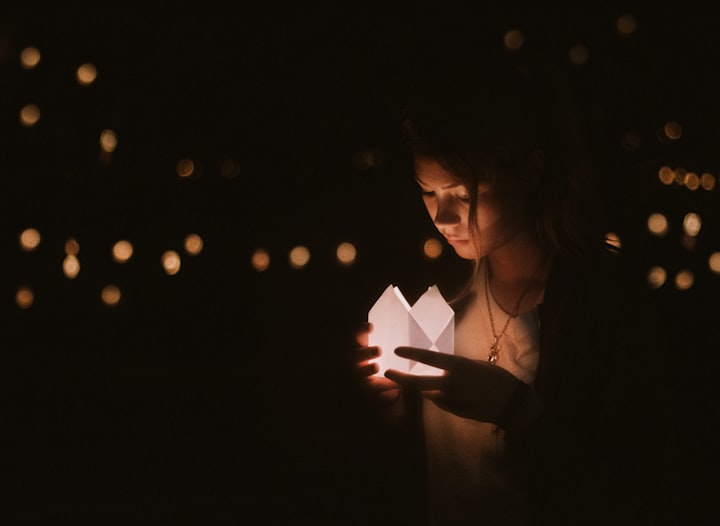
From fireflies to deep sea creatures, the animal world is sparkling with bioluminescent members- but unfortunately, we humans don’t sit amongst their ranks. We can only be jealous of our mammalian friends the playtpi, among others, who, in a display of biofluorescence, glow under black lights. This absorption and release of light produces the same sort of glow a white tennis shoe may have on the dance floor, though this is not the same as producing light when there is none.

Luckily, animals have come across some very creative methods to do just that over the millennia. Looking to their example may pave the path for humanity to develop their own methods to create fashion statements such as glowing tattoos or to provide everyone with light that can’t be taken away with a missed electricity bill.
To start us off, one cannot bring up bioluminescence without touching on the anglerfish. Their glowing lure or esca is a common trope in media ranging from Sunday morning cartoons to more indirect allusions in adult-aimed science fiction novels. That light is an important part of our image of an anglerfish, so it is interesting to note that the light is not truly produced by the anglerfish at all.

While there are a couple hundred species of anglerfish of many shapes and sizes, each of them has a silent partner: bioluminescent bacteria known as Photobacterium. This species of bacteria can vary between anglerfish species but each one lives within the esca, providing a glowing lure so the anglerfish can hunt while receiving the protection of the light organ as well as nutrients for their own growth.
Since anglerfish are deep sea animals, studying them in captivity or even finding wild specimens can be a challenge. Therefore, how anglerfish form their symbiotic relationship with the bacteria in their lure is still not fully understood. However, genetic evidence shows that the bacteria are undergoing a process not unlike how animals cells “domesticated” mitochondria - the famous “powerhouse of the cell” that once was likely an independent organism on its own before we tied it down with commitment. Compared to free versions of these bacteria, those found in dissections of anglerfish have around 50% less genes.

(This is not a picture of the bacteria in question.)
They are beginning to become more dependent on the anglerfish, as processes and features that once helped them to survive on their own become obsolete and are no longer preserved by natural selection, like throwing out your blender when your partner starts buying you smoothies everyday. This means the relationship, while somewhat new on an evolutionary scale from the bacteria’s perspective, is fairly stable (much like one with someone who will buy you smoothies everyday). It may even be possible to mimic this relationship.

Key to this potential mimicry would be something to contain the bacteria safely. Wrapping it up in tissue it can’t escape but that it can glow through, like storing a fancy jello in a glass bowl. Lab-grown organs have been a hot topic for several years now, but have seen success with skin, livers, pseudo-brain tissue, heart tissue, and a variety of other organ tissues. Considering the lure of the anglerfish’s main complications are in the movement of the lure and the muscles involved therein, we can eliminate some of the complexity in our own attempt and work mainly with skin.
After all, the best option may be to create nodules like those used by trees to contain their own beneficial microbial partners - small galls which develop upon interaction with the microbes and which the microbe inhabit. These, in a way, are similar to little pimples on the plant roots in that they swell to contain an “infection.” An artificial set of nodules for humans using human skin would isolate the bacteria from the full system while still providing nutrients and protection. Plus, the risk of rejecting one’s own skin, even if grown in a lab, is not the highest and skin itself is designed to prevent the movement of microbes through it. Sure, "glowing almost-pimples" doesn’t sound overly attractive, but simply changing what we call them to “starspots” can solve the problem of how it sounds (cue author laughing).

Alternatively, an organ that created chemicals directly that produced light, much like the lanternfish’s approach to bioluminescence, would be a possible route to human bioluminescence. However, making a new tissue that produced these chemicals or adapting the tissue of a lanternfish to avoid rejection by a human host would be far more complicated than piggybacking off the evolutionary success of bacteria that already shine with their own light. Additionally, the containment would help minimize any potential effects from the chemicals involved in the glow. Especially since humanity already has organs designed to contain beneficial bacteria.
Mutualism is a form of symbiosis in which both partners benefit from the relationship. Humans have a form of mutualism with some microbes already. The bacteria in your gut help to break down some molecules you could not digest on your own in return for something which may sound familiar: protection and nutrients. Of course, should these bacteria leave the organ they live in, they could cause huge problems; sepsis is a possible consequence and is part of what can make a gut wound so deadly. The idea of creating an artificial organ to hold a colony of, say, glowing Photobacterium, may seem far too risky in this light. Yet without our gut bacteria, we would not lead safer lives - in fact, we would find it very difficult to survive.

All things in their place, in moderation, is how humanity and most life on Earth has survived thus far. What helps the stomach does not necessarily belong in the eye, for example, and even too much water can lead to potentially deadly intoxication. We have harnessed the powers of microbes for medicine, food, and other commercial products that may not enter the body. The step into a market for self-modification is a big one, but one which may open incredible possibilities for utility and self-expression. It's a whole new horizon.

Starspots could be a beautiful way to create spirals of light or constellations of images dear to you. Carrying light with us in a way that doesn’t need to be recharged or held in the hands is helpful in a utilitarian way, too. Anyone who has had to walk anywhere at night knows it’s better a car sees you than that it doesn’t. Furthermore, as brownouts and blackouts become more common with the ongoing climate crisis, the ability to find one another in the dark becomes more pressing. And in natural disasters? Search and rescue? Potentially life-saving.
Yes, it would take a great deal of effort and complexity for something which may end up being very small in size. Legislature and social norms may need some coaxing before they could be accepted and immense courage is needed for any real change. Still I believe the utilitarian benefits and the sheer magic of bioluminescence is something worth working towards. Small, light-producing organs holding a partner microbe have been reiterated over and over in nature; the idea is neither new nor untested. Overall, given the current technology, this would likely be the best way to give humans bioluminescence in the near future. At the end of it all, I only hope one day I’ll live to see humanity shine.
About the Creator
Corwynna
I'm a 28 year old writer and biologist with a million hobbies and enough passion for all of them!
Explore my music, stories, and homebrew on my site:
https://sites.google.com/view/corwynnascorner/home






Comments
There are no comments for this story
Be the first to respond and start the conversation.